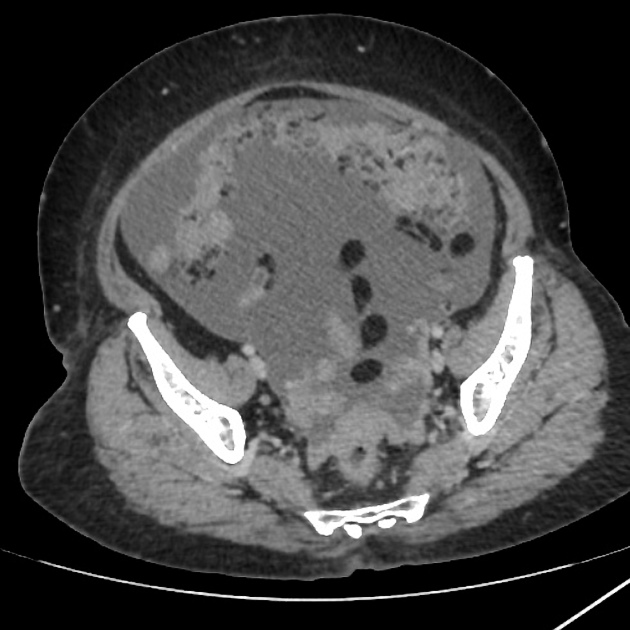Presentation
Progressive abdominal distension with loss of appetite. Ultrasound revealed gross ascites.
Patient Data





Gross ascites with peritoneal deposits in the undersurface of right hemidiaphragm, along the phrenic margin of spleen, layers of omental caking, chunks of peritoneal deposits in right iliac fossa and pouch of Douglas. Poorly marginated and bulky appearing right ovary.
Case Discussion
The extensive peritoneal deposits with omental caking in a female patient with gross ascites should always raise the suspicion of a primary ovarian or gastrointestinal neoplasm. The irregularly marginated bulky right ovary might be the source of tumor spread in this patient.




 Unable to process the form. Check for errors and try again.
Unable to process the form. Check for errors and try again.